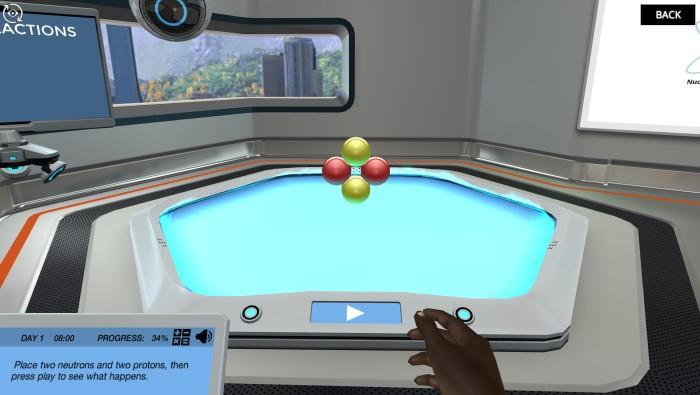
The world we interact with is built up from minuscule building blocks known as atoms. But what really occurs within these infinitesimal units, particularly within their nucleus? The answer lies in the realm of nuclear chemistry.
Nuclear chemistry is an intriguing and impactful scientific field, showcasing its relevance in various aspects of our daily life. From facilitating energy generation in nuclear power plants to the diagnosis and treatment of diseases through the use of medical isotopes, its pivotal role in contemporary life is unquestionable. Far from being a secluded branch of science, it serves as an integrative link across a variety of science disciplines.
Yet, for educators teaching abstract concepts through traditional lecturing methods, it can be a challenge. This article aims to bridge that gap by presenting five creative ways to teach Nuclear chemistry. We endeavor to break down the barriers surrounding this pivotal area of study.
Complex topics such as nuclear chemistry are often best comprehended when students have tangible materials or interactive elements to experiment with. Traditional textbook methods, using 2D atomic diagrams, may fall short in accurately imparting knowledge.
One approach is to use interactive models that breathe life into nuclear chemistry. These models allow students to visualize and manipulate atomic structures, which results in a prolonged and deep understanding of the concept.
One example of such tools is Labster’s virtual labs, which offer interactive 3D models of atomic structures. In Labster's nuclear chemistry simulation, students use a holofloor to gain insight into the interaction of protons and neutrons within the atomic nucleus. Then, they experiment with isotopes and figure out why one combination is more stable than the other.

Long lectures can easily lose their appeal, leading to student disinterest. To counteract this and maintain student engagement, educators can infuse captivating games and activities into their lesson plans. They not only make learning more entertaining but also contribute to more lasting and memorable comprehension.
You can design multiple activities for teaching nuclear chemistry, such as:
Considering that technology has become an integral part of our daily lives, and we interact with a vast amount of visual content routinely, it makes sense to harness its potential for educational purposes. Teachers can utilize video animations, simulations, and virtual reality to clarify the intricate concepts within nuclear chemistry.

Labster's nuclear chemistry simulation is a prime example of how technology can be leveraged in education. This digital platform employs 3D models and interactive tasks to illustrate nuclear processes. It allows students to virtually witness atomic decay and the emission of alpha, beta, and gamma rays. This immersive educational experience not only piques students' interest but also enriches their understanding of the subject.
Discover Labster's nuclear chemistry virtual lab today!
Connecting nuclear chemistry to potential careers can give students a broader perspective on the relevance of the subject. Educators can illustrate how the concepts they learn in class can translate into tangible career paths in fields like nuclear engineering, nuclear medicine, radiation therapy, and energy policy.
In addition, you can invite professionals from these fields to share their experiences. This approach not only enhances their understanding of the subject but also helps students appreciate its real-world relevance.
Illustrating the real-world applications of nuclear chemistry can make the subject more significant and tangible for students.
This can be achieved by using practical examples such as the generation of nuclear power, medical imaging processes like PET scans, and carbon dating techniques used in archaeology. By elaborating on how each of these technologies relies on the principles of nuclear chemistry and radioactivity, you can bridge the gap between academic theories and practical applications.
By highlighting the subject's relevance in everyday life, students are encouraged to see the larger implications of their learning. This understanding sparks their curiosity, fostering a self-motivated exploration of the subject.
We have meticulously designed these methods with the dual objective of making nuclear chemistry more approachable for educators to teach and exciting for students to learn. These techniques tap into the inherent curiosity of learners, enabling them to understand nuclear chemistry in a practical, real-world context.
Try our free 30-day All Access Educator's Pass today and teach with the Nuclear Chemistry simulation alongside 300+ other virtual labs!

Labster helps universities and high schools enhance student success in STEM.
Request DemoRequest a demo to discover how Labster helps high schools and universities enhance student success.
Request Demo